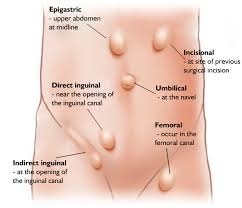If you are not familiar with hernias, you may be wondering about what kind of situation it can put you into. When you have a hernia, your abdomen is directly affected, because hernias are abnormalities in the abdomen due to various causes.
So, what kind of abnormalities are we talking about here?
The disruption hernia is related to the arrangement of the organs in your body. A hernia occurs when one or more internal organs move outside of the thoracic box or outside the tissue that surrounds it and maintains this part of the human skeleton in place. A hernia also occurs when the organ exits through the wall of tissue it normally resides in.
Are hernias avoidable?
Sometimes hernias can be avoided. But sometimes hernias are caused by a predisposition to them caused by genetic reasons or tendencies due to lifestyle choices or accidents.
What do hernias feel on your body?
Hernias feel like a protruding lump that sticks out of your body but is sometimes not really visible at plain sight. Sometimes hernias can be detected via physical examination with specific movements of the fingers and hands.
What types of hernias are there?
There are various types of hernias, and each one of them is named after the part of the body that is affected by any given incident. The most frequent types of hernias are abdominal hernias and inguinal hernias.
-Abdominal hernias: Also called hernias of the abdominal wall. When you have a herniated abdominal wall, a protrusion of the intestine through an opening or a weak area of the abdominal wall appears. A herniated abdominal wall causes a noticeable protrusion, but little discomfort. They can be diagnosed via physical examination and sometimes with the use of computed tomography.
Sometimes abdominal hernias require reconstructive surgery on them.
Abdominal hernias are very frequent, especially in males. In the United States, for example, about 700,000 hernia operations are performed each year. Hernias are often referred to by the area in which they appear.
The abdominal wall is thick and resistant for the most part; therefore, hernias usually occur in a zone of weakness in which an existing opening has been closed previously. Lifting too much weight or exerting too much effort can make a hernia more obvious, but they do not cause its formation.
An inguinal hernia: Inguinal hernias appear in the inguinal fold or the scrotum. They are more frequent in males. They are of two types, direct and indirect, according to the exact place where they are produced. Inguinal hernias also occur in children.
An umbilical hernia: Umbilical hernias occur around the umbilicus. Many babies have a small umbilical hernia because the opening through which the blood vessels of the umbilical cord pass has not been completely closed. In younger children, doctors sometimes check umbilical hernias to see if they closed on their own.
Some adults have an umbilical hernia because of obesity, pregnancy or excess fluid in the abdomen (ascites).
A femoral hernia: A hernia may develop just below the crease in the groin, in the middle of the thigh where the femoral artery and vein exit the abdomen in the direction of the leg. This type of hernia is more frequent in women.
An incisional hernia: Sometimes, hernias appear through a surgical incision in the abdominal wall. This type of hernia can appear many years after surgery. For this reason, it is recommended that some patients enroll in They can be diagnosed via physical examination and sometimes with the use of computed tomography. It consists of lifestyle choices that prevent hernias, some of them consisting in chewing food more adequately avoiding acid food and performing temperature treatment of the affected area.
Complications related to hernias
If left untreated in any way, hernias can cause serious complications, such as:
Strangulated hernias: A strangulated hernia is the most frequent and serious complication of a hernia, which if untreated kills the patient. The severity is due to two facts: the intestinal occlusion and the subsequent necrosis.
Incarceration: Sometimes an intestinal loop is trapped in the hernia, a condition called incarceration or incarceration. An incarcerated or imprisoned hernia can block (obstruct) the intestine. In rare cases, the hernia imprisons the intestine so strongly that it interrupts the blood supply, which is called strangulation.





